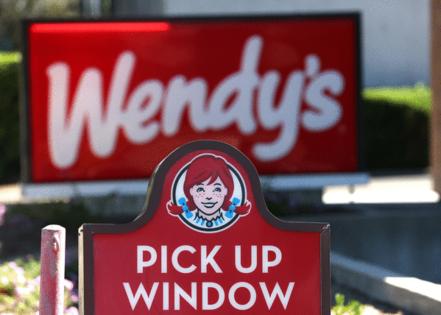Wendy's would have crossed a line by testing surge pricing
Published in Variety Menu
As consumers, we’ve long since adjusted to surge pricing across a wide range of services, from ride-hailing, golf courses and cinemas, gyms to bowling alleys — and even at theme parks. Not to mention airlines and hotels, which have varied their rates according to demand for decades.
But when it was announced that the burger chain Wendy’s that it would start testing dynamic pricing next year, there was a fuss. Surge pricing for fast food feels like a Rubicon is being crossed because it isn't a luxury item. We can argue all day about the unfairness of the lack of healthy options in low-income communities, but it doesn't change the fact that burger chains target food insecure communities, and it has become a cheap staple to feed families. As one Reddit commenter put it, changing the prices throughout the day “is just more predation on the poor.”
In an earnings call in February, Chief Executive Officer Kirk Tanner said the company would invest $20 million in digital menu boards that would allow its restaurants to change prices according to demand. “Dynamic pricing can allow Wendy's to be competitive and flexible with pricing, motivate customers to visit and provide them with the food they love at a great value,” a spokesperson told Fox TV stations. But in response to the backlash, the company issued a statement on its website on Tuesday. "We have no plans to do that and would not raise prices when our customers are visiting us most. Any features we may test in the future would be designed to benefit our customers and restaurant crew members," it said.
It was smart to walk back the initial announcement because it set off something of a firestorm among some Wendy’s fans on — where else? — social media. Inevitably, comparisons are being drawn to spiking burger prices at McDonald’s. Prices have been rising in fast food chains more generally, contributing to growing anxiety about food inflation.
Now, you could argue that the restaurant industry practically invented surging: After all, the “Happy Hour” is over a century old. More recently, as the sector has struggled to recover from the pandemic slump, new variants of the concept have been tried out — along with many other bells and whistles — by eateries desperate to revive their fortunes. (Nor is this a uniquely American phenomenon: A recent Barclays poll of more than 2,000 consumers in the UK showed 47% of British people had noticed examples of surge pricing.)
Even restaurants you wouldn’t expect to have any trouble getting people in the door are trying it. Late last year, dynamic pricing was introduced at one of my all-time favorite eateries, Chicago’s legendary Topolobampo: The tasting-menu dinner was raised $165 to $185 on weekends. Customers don’t seem to mind. “We haven’t had a backlash or anybody even commenting on it,” chef-owner Rick Bayless told Business Insider.
But charging $20 more at the top end of the market is one thing — it’s quite another to add $1 to the price of a Baconator, my Wendy’s sandwich of choice, during rush hours. That Redditor can hardly be the only person to view Wendy’s initial announcement as exploitative.
And if anything, those digital menu boards, would’ve deepened that perception. Studies show that transparency isn’t necessarily a virtue when it comes to surge pricing. Researchers at Germany’s University of Passau found that “when confronted with dynamic pricing customers react negatively due to norm violation, in terms of their perceptions of pricing transparency, price fairness, and value, as well as their purchase intention.”
The key words there are “fairness” and “value.” You don’t have to be a fan of the FX/Hulu show "The Bear" to know the price of a meal matters more to those who buy cheap cheeseburgers than to those who crave one of Bayless’ brilliant creations — like the tacos estilo escuinapa, which are made from “crispy spiny lobster taquitos, rich tomato broth, tangy fall vegetables, herby-garlicky mussels.”
As to fairness, just imagine waiting in a queue at your local Wendy’s, only to find, upon reaching the counter, that your Dave’s Double will cost you more than it did the person just ahead of you. Thankfully, it now looks like customers won’t have to experience that. Had Wendy’s not clarified its stance, the only surge I’d expect is one of resentment.
____
This column does not necessarily reflect the opinion of the editorial board or Bloomberg LP and its owners.
Bobby Ghosh is a Bloomberg Opinion columnist covering culture. Previously, he covered foreign affairs.
©2024 Bloomberg L.P. Visit bloomberg.com/opinion. Distributed by Tribune Content Agency, LLC.







Comments